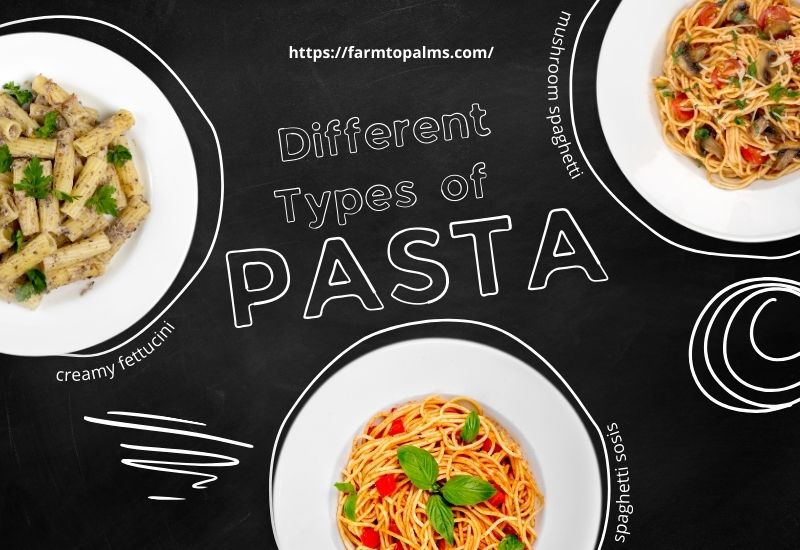Pairing different types of pasta with suitable recipes or sauces doesn’t have to be a mystery. Understanding the variety of pasta available can help you create incredibly satisfying pasta dishes. Let’s explore some popular types of pasta and when to use each.
While there isn’t necessarily a “wrong” choice when using a specific type of pasta in a recipe, you may find that particular pasta shapes or types work better with certain dishes. For example, elbow macaroni, which absorbs oozy cheese in creamy mac ‘n’ cheese, might be less effective when served with a thick, chunky tomato sauce.
As you gain more experience cooking and experimenting with pasta, you’ll be able to determine which types of sauces or preparation methods are most suitable for each type. To get you started, here is a primer on 20 common types of pasta and when to use them.
What are the four health benefits of pasta?
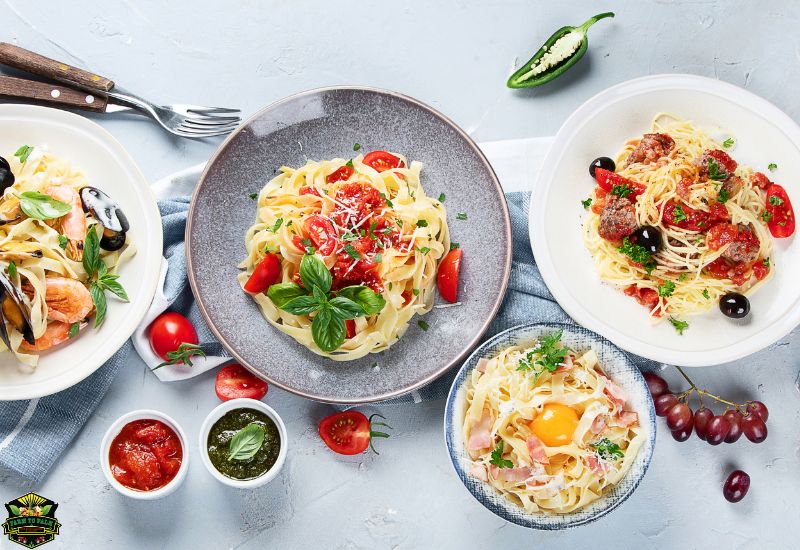
Pasta offers numerous health benefits and can serve as a nutritious foundation for a satisfying meal. Here’s why:
Sustained Energy
Pasta, a carbohydrate-rich food, provides glucose, essential fuel for your brain and muscles. Unlike refined and processed carbohydrates, pasta releases energy slowly and steadily, preventing the energy spikes associated with simple sugars.
Low Sodium and Cholesterol-Free
For those concerned about their cholesterol levels, pasta is an excellent choice as it is low in sodium and cholesterol-free. Enriched varieties of pasta also contain essential nutrients like iron and B vitamins.
Folic Acid
Enriched pasta is fortified with folic acid, which is particularly important for women of childbearing age. A serving of dry pasta supplies approximately 100 micrograms of folic acid, fulfilling 25% of the recommended daily intake.
Balanced Diet
Pasta is an integral part of a well-balanced diet. The Australian Government guidelines suggest that 35% of our daily calorie intake should come from complex carbohydrates like pasta. Combining pasta with lean protein and vegetables creates a complete meal that helps you achieve your dietary goals.
What are the 19 types of pasta?
| Type of Pasta | Origin | Description | Best Uses |
|---|---|---|---|
| Bucatini | Italy | Thick, spaghetti-like noodles with a hole in the center. Excellent for holding onto sauces in pasta dishes and noodle soups. | Pasta dishes, noodle soups |
| Cannelloni | Italy | Large tube-shaped pasta can be filled with various ingredients like spinach and ricotta. Great for baked dishes. | Baked dishes |
| Cavatappi | Italy | Spiral-shaped hollow noodles resembling two macaroni noodles fused together. Perfect for macaroni and cheese as the sauce gets inside and wraps around the surface. | Macaroni and cheese |
| Ditalini | Italy | Small, thimble-shaped pasta is ideal for soups like beef and barley or pasta salads. | Soups, pasta salads |
| Farfalle | Italy | Bow tie-shaped pasta that works well with cream- and tomato-based sauces. Varieties of green, white, and red can represent the Italian flag. | Cream- and tomato-based sauces |
| Fettuccini | Italy | Thick, flat ribbon strands made from flour and egg, commonly used in fettuccini alfredo. | Fettuccini alfredo |
| Fusilli | Italy | Spiral-shaped pasta that holds on well to dressings and sauces. Suitable for pasta salads or dishes with heavier meat or tomato sauce. | Pasta salads, meat or tomato sauce dishes |
| Gnocchi | Italy | Heavier pasta has flour, egg, potato, cheese, or cornmeal. It can be enjoyed in soup or tossed in olive oil and herbs. | Soup, standalone or tossed in olive oil |
| Linguine | Italy | Long, narrow, flat pasta similar to spaghetti but broader. Works well with heartier sauces compared to traditional spaghetti. | Heartier sauces |
| Macaroni | Italy | Elbow-shaped pasta is commonly used in macaroni and cheese but is also suitable for soups, stir-fries, and pasta salads. | Macaroni and cheese, soups, stir-fries, pasta salads |
| Orecchiette | Italy | Dome-shaped pasta that scoops up cream sauces well. It works with any sauce, but each bite is sauce-heavy. | Cream sauces |
| Orzo | Italy | Rice-like short-cut pasta is used in orzo salads and vegetable soups—a good source of B vitamins. | Orzo salads, vegetable soups |
| Pappardelle | Italy | Thick, flat pasta suitable for wealthy and heavy meat sauces like Bolognese. It can withstand any sauce or meat without breaking or tearing. | Rich meat sauces |
| Penne | Italy | Tube-shaped pasta with angled ends that catches and soaks up delicious sauces well. It is ideal for meaty marinara or cream sauce. | Meaty marinara or cream sauce |
| Rigatoni | Italy | Tube-shaped pasta is similar to penne but more extensive and without angled ends. It handles heartier sauces well and is excellent for baked pasta. | Heartier sauces, baked pasta |
| Rotelle | Italy | Petite wagon wheel-shaped pasta, or wagon wheels, is often found in children’s soups and dishes. | Children’s soups, pasta dishes |
| Tagliatelle | Italy | Flat egg noodles are similar to fettuccini but made with egg pasta dough. Traditionally used in meat sauces, it pairs well with seafood and vegetable-heavy dishes. | Meat sauces, seafood dishes, vegetable-heavy dishes |
| Vermicelli | Italy | Thin pasta resembling angel hair pasta that works well with light sauces. Narrower in the United States compared to traditional spaghetti in Italy. | Light sauces |
| Ziti | Italy | Hollow and round pasta without surface ridges is commonly used in baked pasta and casseroles due to its smooth texture and ability to withstand high heat. | Baked pasta, casseroles |
The most popular types of pasta and how to use them
Bucatini

Bucatini is a type of pasta that originated in Italy. It is similar to spaghetti but has a hole running through the center. The name “bucatini” comes from the Italian word for “hole”. It is made from hard durum wheat flour and water and has a length of 25-30 cm with a diameter of 3 mm.
Bucatini is commonly served in Italian cuisine with sauces such as buttery, guanciale (cured meat), vegetables, cheese, eggs, anchovies, or sardines. One popular dish is bucatini all amatriciana, made with guanciale and served with a tomato-based sauce.
Bucatini can also be used as a biodegradable drinking straw when it is raw.
The pasta dough is extruded through a machine with tiny circular perforations to make bucatini, creating long tubes. These tubes are then trimmed to the desired length and can be cooked fresh or dried.
If making bucatini at home, handling the pasta gently is essential to avoid closing the hole in the middle before eating. The average cooking time for bucatini is nine minutes.
Bucatini is a versatile pasta that can be enjoyed with various delicious sauces in Italian cuisine.
Cannelloni

Cannelloni is a type of pasta dish in Italian cuisine. It consists of cylindrical pasta shells filled with spinach, ricotta, or minced beef.
The filled shells are then baked and topped with tomato sauce. This dish is also popular in Catalan cuisine, where it is known as cantons and traditionally eaten on Saint Stephen’s Day.
The term “cannelloni” emerged in the early 20th century, although references to stuffed pasta can be traced back to 1770. In the United States, manicotti is the equivalent of cannelloni but may also refer to the baked dish.
The main difference is that cannelloni uses pasta sheets wrapped around the filling, while manicotti is made from machine-extruded cylinders filled from one end.
Cavatappi

Cavatappi is a type of macaroni pasta with a spiral tube shape resembling corkscrews. It is known by various names such as cellentani, amori, serpentine, spiral, tortellini, Castiglione, or scooby doo.
It should not be confused with fusilli, another pasta shape often called “corkscrew pasta.” Fusilli is a twisted flat pasta, while cavatappi has a hollow tube shape.
Cavatappi is typically grooved or ridged on its surface. This pasta is made without eggs and can be yellow or colored with vegetables or food coloring, such as green or red. It is versatile and can be used in various dishes, including salads, soups, and casseroles.
Ditalini
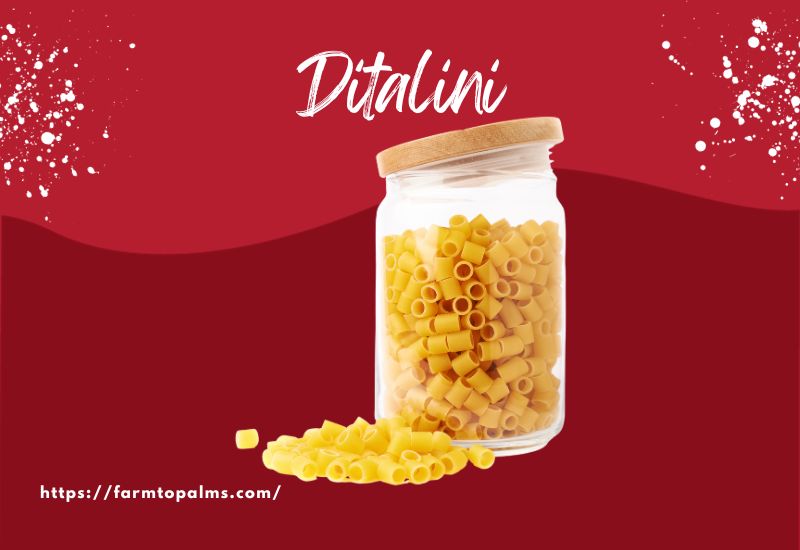
Ditalini, or tubettini, is a type of pasta resembling small tubes. It is sometimes called “thimble-sized” or “very short macaroni.”
Originating from Apulia, Italy, ditalini and other short-cut pasta varieties became popular during the industrial age. Today, ditalini is widely produced and commonly used in Sicilian cuisine.
Ditalini is utilized in various pasta dishes, including the famous pasta e fagioli (pasta and beans). In Sicilian cuisine, it is a critical ingredient in dishes like pasta with ricotta cheese and pasta chi broccoli ‘rriminati, a pasta and broccoli dish.
Due to its small size, ditalini is often preferred for soups as it can easily fit on a spoon. Additionally, it can be used in pasta salads.
Farfalle
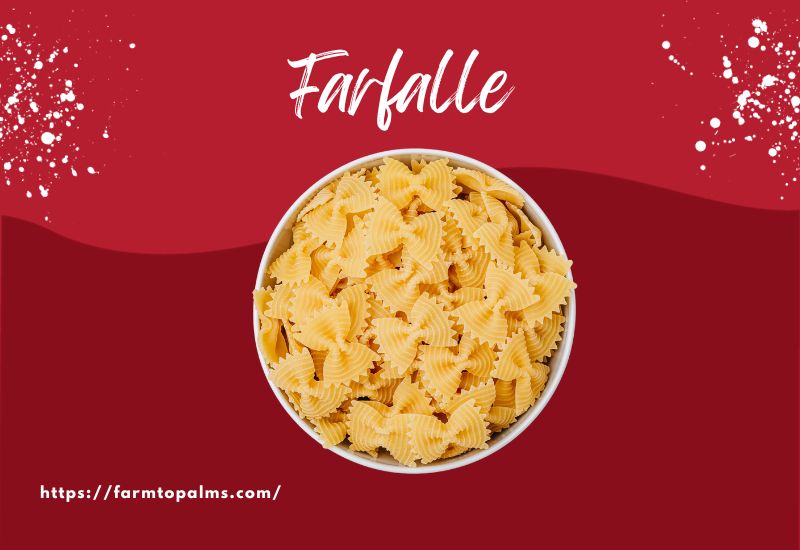
Farfalle, also known as bow-tie or butterfly pasta, is an Italian pasta dating back to the 16th century. It has a distinctive bow-tie shape and can be enjoyed with various sauces, but cream and tomato are particularly well-suited.
Adding ingredients like beetroot, spinach, or cuttlefish ink to the dough, Farfalle can come in different colors, such as red, green, and black. It is often sold in green, white, and red, reminiscent of the Italian flag.
Fettuccine
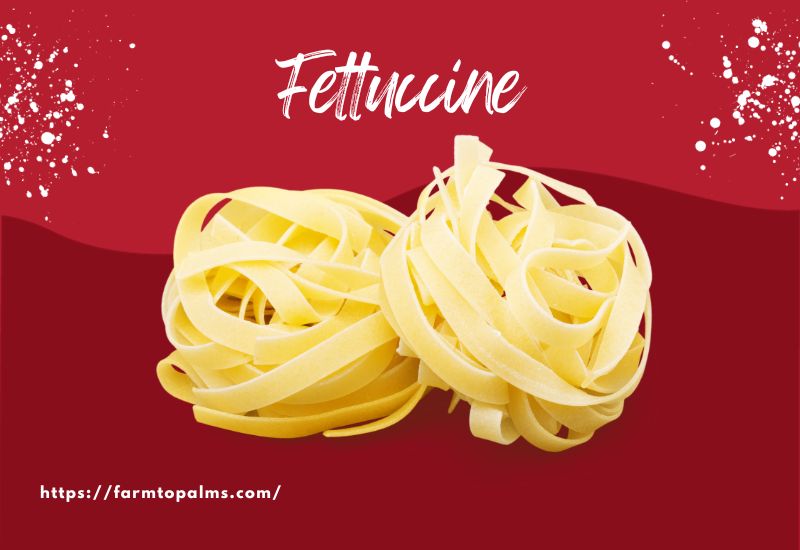
Fettuccine is a type of pasta popular in Roman cuisine. It is a flat, thick pasta traditionally made of egg and flour. It is broader than tagliatelle and can be made with spinach.
Fettuccine is often eaten with beef or chicken ragù. One famous dish is fettuccine Alfredo, which became popular in the mid-20th century and is a cornerstone of Italian-American cuisine. Fettuccine can be made fresh or bought dried in stores.
Fusilli
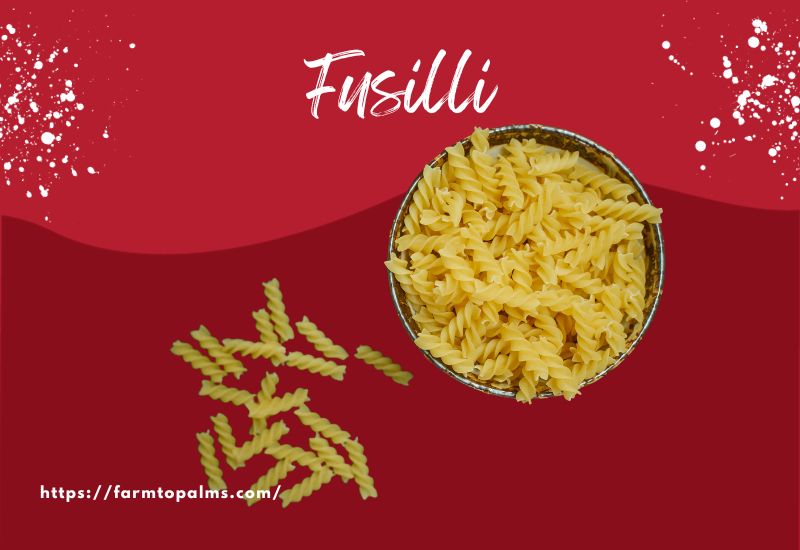
Fusilli is a pasta type known for its unique corkscrew or spiral shapes. It is also sometimes referred to as rotini. Alongside the traditional plain and whole wheat versions, fusilli can be made in various colors by incorporating different ingredients into the dough.
These additional ingredients enhance the visual appeal and impart distinct flavors. For instance, red fusilli can be achieved by adding beetroot or tomato, while green fusilli can be made using spinach. Another interesting variation is black fusilli, which incorporates cuttlefish ink into the dough.
Gnocchi
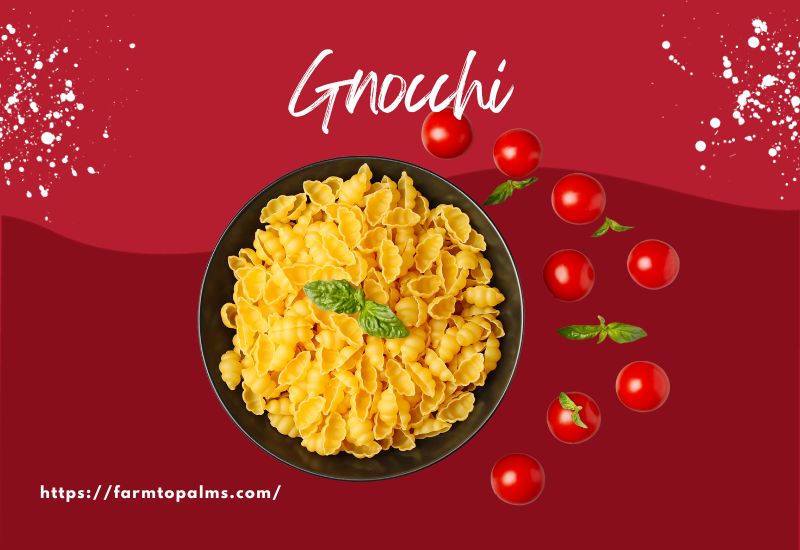
Gnocchi is a type of pasta in Italian cuisine. They are small lumps of dough made from wheat flour, egg, salt, and potato.
Variations of gnocchi include semolina flour, cheese, breadcrumbs, cornmeal, and herbs. Gnocchi are typically boiled in salted water and then served with various sauces.
They are commonly enjoyed as a first course or as a side dish. Gnocchi can be homemade, bought from specialty stores, or produced commercially.
They can be served with melted butter, sage, pesto, or other sauces. Some variations of gnocchi are made by pressing the dough through a sieve or a perforated spoon.
Linguine
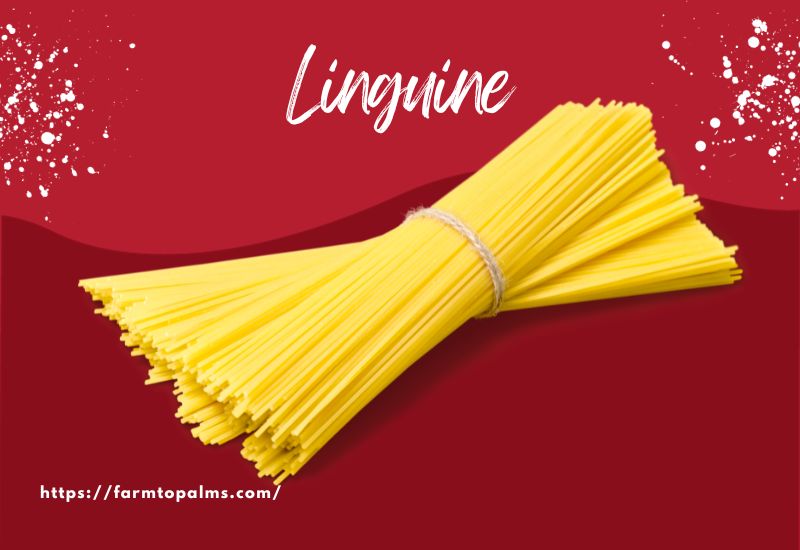
Linguine is an Italian pasta that is similar to fettuccine and trenette. It has an elliptical shape and is about 4 millimeters wide, more comprehensive than spaghetti but not as wide as fettuccine.
The name linguine means “little tongues” in Italian and is traditionally served with sauces like pesto. However, tomato and fish-based sauces have also become popular choices.
Linguine is available in white flour and whole-wheat versions, although it was initially made with durum wheat. It originated in Italy, specifically in Genoa, and is considered a more traditional pasta. National Linguine Day is celebrated on September 15 annually in the United States.
Macaroni

Macaroni is a type of dry pasta shaped like narrow tubes. It’s made from durum wheat and often cut into short lengths. Commercially produced through large-scale extrusion, the curved shape is achieved by varying extrusion speeds.
Elbow macaroni is commonly used in macaroni and cheese recipes. In Italy, “maccheroni” refers to various pasta shapes, including straight and tubular types. In the US, federal regulations define dried pasta shapes as “macaroni products.”
Orecchiette
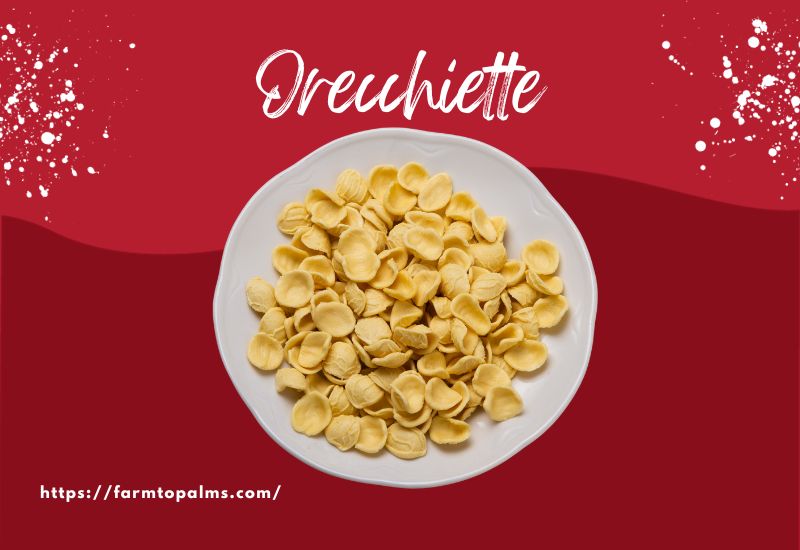
Orecchiette is a type of pasta from Apulia, Italy. Its name comes from its shape, which resembles a small ear. Orecchiette has a slight dome shape with a rough surface.
They are made with durum wheat and water; eggs are rarely used. The dough is rolled and cut into cubes, then pressed with a knife to create a curled shape.
Orzo
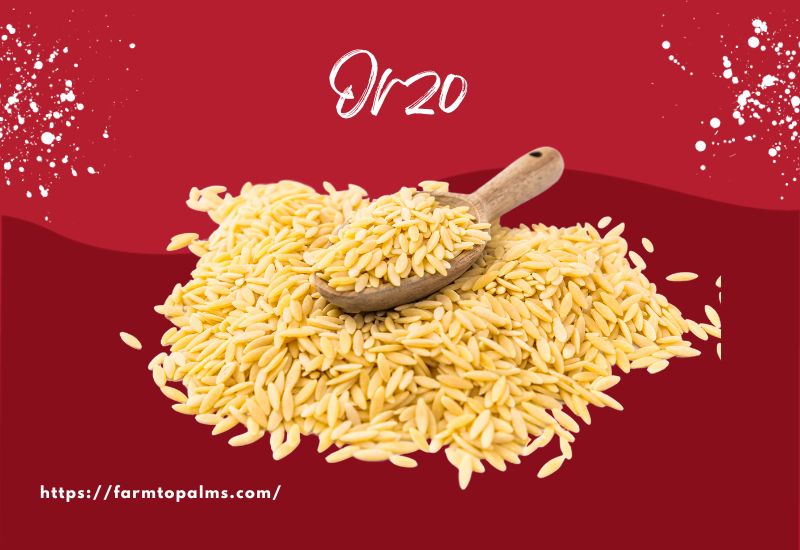
Orzo is a type of short-cut pasta that is shaped like a large grain of rice. It is commonly made from flour, but it can also be made from whole grain or semolina. It is called orzo in North America, but the word usually refers to barley in Italy.
Orzo can be served alone in soup as part of a salad, pilaf, giouvetsi, or baked in a casserole. It can also be colored using ingredients like saffron, chilies, or black beans to create different-colored pasta.
Pappardelle
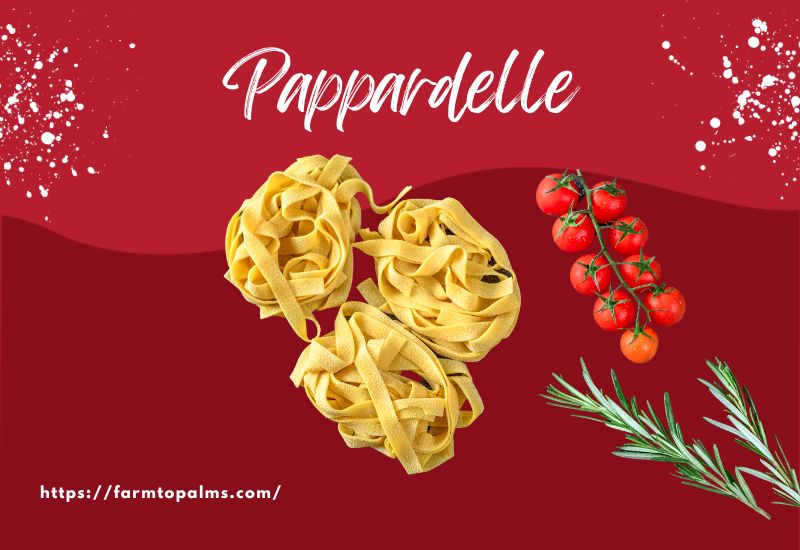
Pappardelle, derived from the Italian word “pappare,” meaning “to gobble up,” is a type of pasta originating from the Tuscan region.
It is characterized by its extensive, broad, and flat shape, similar to wide fettuccine. Fresh pappardelle typically measures two to three centimeters (3/4 – 1 inch) in width and may have fluted edges, while dried egg pappardelle has straight sides.
Penne
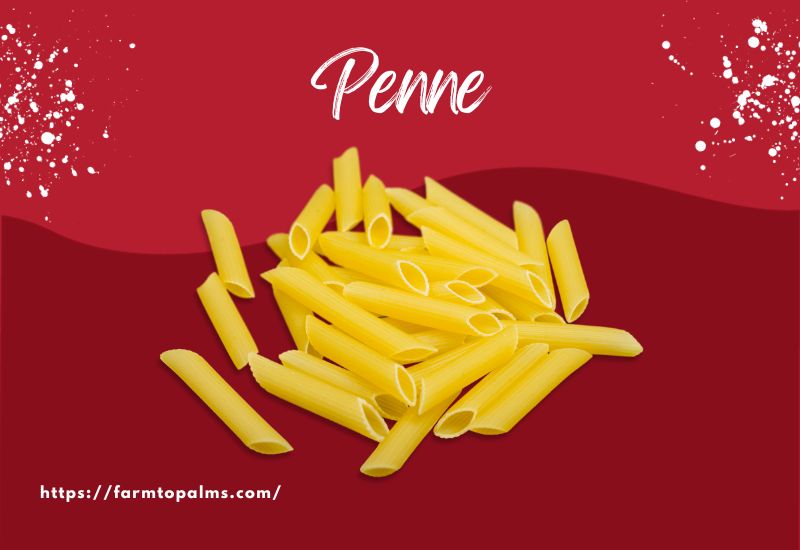
Penne is a type of pasta with cylinder-shaped pieces cut at an angle. It is made from wheat flour and is named after the Italian word for feather.
Penne was created in 1865 by Giovanni Battista Capurro, who patented a machine that cut fresh pasta into a pen shape without crushing it.
There are two main variants of penne in Italy: penne lisce (smooth) and penne rigate (furrowed).
Penne is commonly cooked al dente and is well-suited for various sauces, such as pesto, marinara, or arrabbiata. It has been featured in Italian movies like La Grande Bouffe and Roma.
Rigatoni
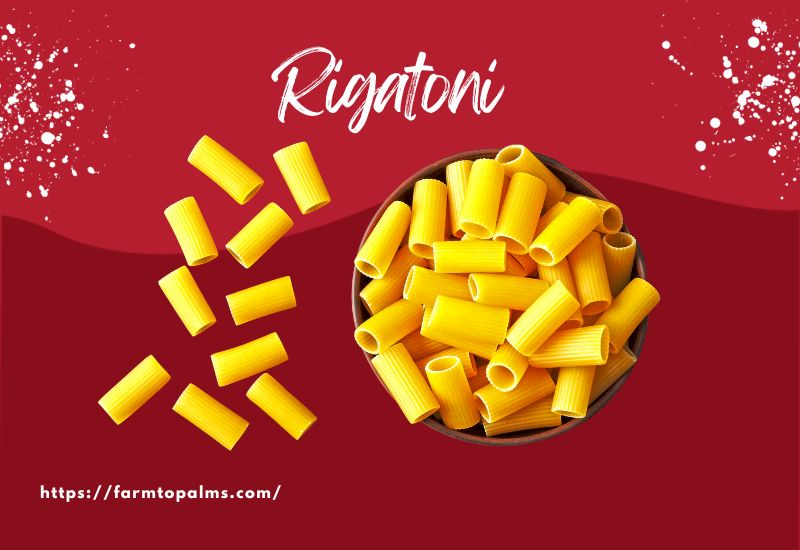
Rigatoni is a type of pasta originating in Italy. It is more significant than penne and ziti and sometimes slightly curved. Rigatoni has ridges down its length, sometimes spiraling around the tube. Unlike penne, rigatoni has square ends.
The word “rigatoni” comes from the Italian word “rigato,” meaning “ridged” or “lined.” Rigatoni is widespread in southern and central Italy, particularly in Sicily, due to its ridges that provide better surfaces for sauces and grated cheese.
Rotelle
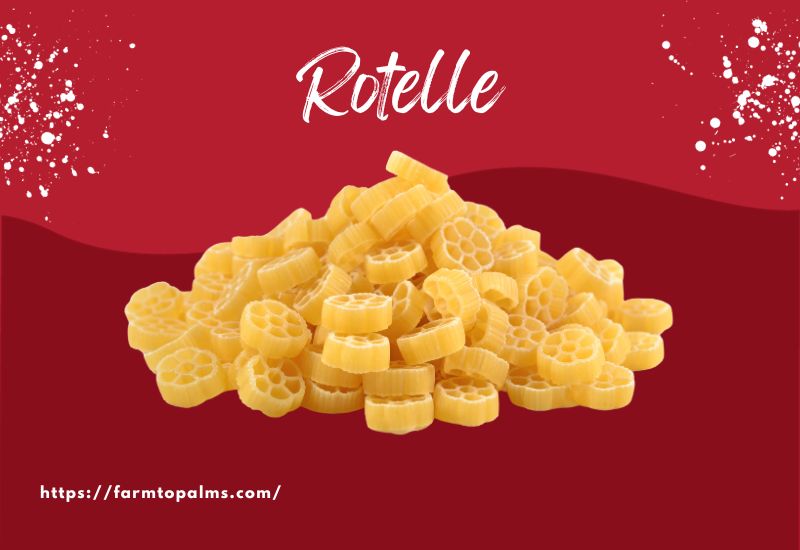
Rotelle is a pasta variety that resembles wheels with spokes, similar to fiori. The name comes from the Italian word for a small wheel. In Italy, they are also known as “route,” In the US, they are commonly called “wagon wheels.”
Tagliatelle
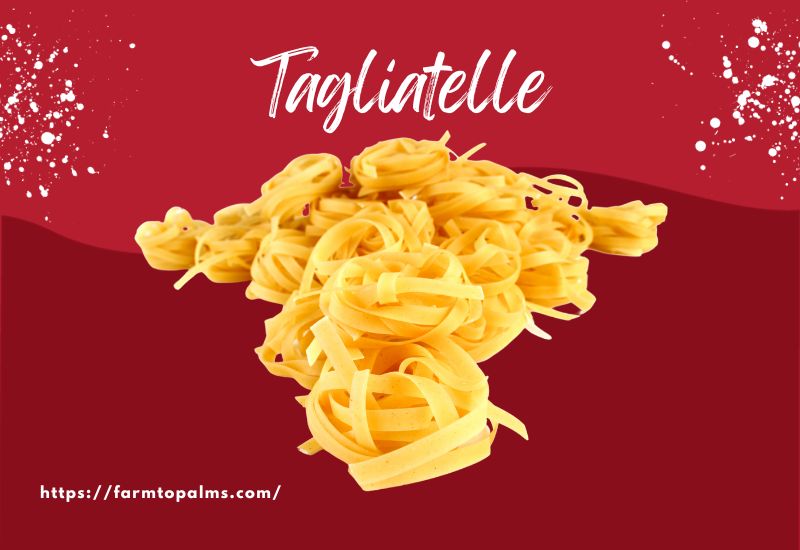
Tagliatelle is pasta from Italy, specifically from the Emilia-Romagna and Marche regions. It is similar in shape to fettuccine and is typically about 6 mm wide.
Tagliatelle is commonly served with various sauces, the classic being meat or Bolognese. The traditional recipe for tagliatelle calls for one egg for every hundred grams of flour.
The term “tagliatelle” dates back to the Renaissance and has been mentioned in various historical documents. The pasta has a porous and rough texture, making it perfect for thick sauces, particularly beef, veal, or pork.
However, vegetarian options are also available, such as dishes with breadcrumbs and nuts, eggs and cheese, or simply tomatoes and basil.
Vermicelli
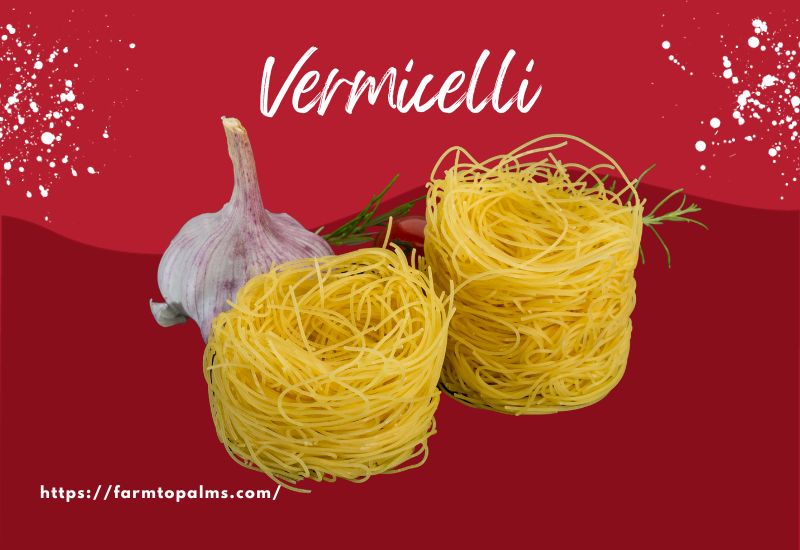
Vermicelli is a type of pasta that is round and similar to spaghetti. It is typically thinner in English-speaking regions but thicker in Italy. The term “vermicelli” is also used to refer to thin noodles from Asia, such as angel hair pasta or capellini in Vietnam.
Ziti
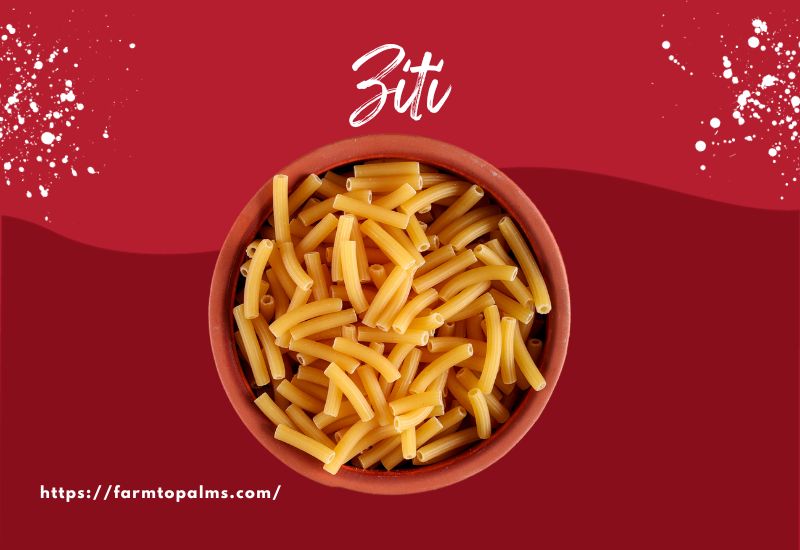
Ziti is a pasta originating from Southern Italy, specifically Campania and Sicily. It is shaped into long, wide tubes about 25 cm (9.8 inches). Ziti is often broken into smaller pieces before cooking; it is similar to bucatini but is thicker.
The term “ziti” comes from the Sicilian words “zita” and “zitu,” meaning “bride” and “groom” respectively. In the TV show The Sopranos, the phrase “box of ziti” is used as a metaphor for one thousand dollars.
Ziti is commonly used in dishes like pasta alla Norma and is traditionally served at wedding feasts in Sicily. There is also a thicker version called zitoni or zitone, which falls between ziti and rigatoni in size.
I recommend visiting Farm to Palms to explore and purchase various pasta types for your culinary adventures. From traditional favorites like penne and linguine to unique options like bucatini and pappardelle, Farm to Palms has everything you need to create delicious pasta dishes at home. With such a diverse selection, you can find the perfect pasta for any recipe or sauce you have in mind. Happy cooking!

